
The War of the Austrian Succession was a European conflict fought between 1740 and 1748, primarily in Central Europe, the Austrian Netherlands, Italy, the Atlantic Ocean and Mediterranean Sea. Related conflicts include King George's War in North America, the War of Jenkins' Ear, the First Carnatic War, and the First and Second Silesian Wars.

The Battle of Fontenoy took place on 11 May 1745 during the War of the Austrian Succession, near Tournai, then part of the Austrian Netherlands, now in Belgium. A French army of 50,000 under Marshal Saxe defeated a Pragmatic Army of roughly the same size, led by the Duke of Cumberland.

The Battle of Hondschoote took place during the Flanders Campaign of the Campaign of 1793 in the French Revolutionary Wars. It was fought during operations surrounding the siege of Dunkirk between 6 and 8 September 1793 at Hondschoote, Nord, France, and resulted in a French victory under General Jean Nicolas Houchard and General Jean-Baptiste Jourdan against the command of Marshal Freytag, part of the Anglo-Hanoverian corps of the Duke of York.

The Battle of Tourcoing saw a Republican French army directed by General of Division Joseph Souham defend against an attack by a Coalition army led by Emperor Francis II and Austrian Prince Josias of Saxe-Coburg-Saalfeld. The French army was temporarily led by Souham in the absence of its normal commander Jean-Charles Pichegru. Threatened with encirclement, Souham and division commanders Jean Victor Marie Moreau and Jacques Philippe Bonnaud improvised a counterattack which defeated the Coalition's widely separated and poorly coordinated columns. The War of the First Coalition action was fought near the town of Tourcoing, north of Lille in northeastern France.
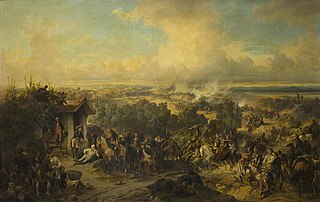
The Battle of (the) Trebbia was fought near the rivers of Tidone, Trebbia, and Nure in northern Italy between the joint Russian and Habsburg army under Alexander Suvorov and the Republican French army of Étienne-Jacques-Joseph-Alexandre Macdonald. Though French forces were moderately more numerous, the Austro-Russians severely defeated the French, sustaining about 5,500 casualties while inflicting losses of 16,500 on their enemies. The War of the Second Coalition engagement occurred west of Piacenza, a city located 70 kilometres (43 mi) southeast of Milan.

The Battle of Trenton was a small but pivotal American Revolutionary War battle on the morning of December 26, 1776, in Trenton, New Jersey. After General George Washington's crossing of the Delaware River north of Trenton the previous night, Washington led the main body of the Continental Army against Hessian auxiliaries garrisoned at Trenton. After a brief battle, almost two-thirds of the Hessian force were captured, with negligible losses to the Americans. The battle significantly boosted the Continental Army's waning morale, and inspired re-enlistments.
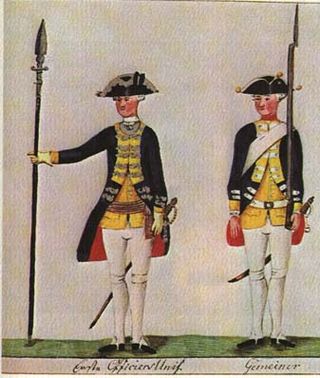
Hessians were German soldiers who served as auxiliaries to the British Army in several major wars in the 18th century, most notably the American Revolutionary War. The term is a synecdoche for all Germans who fought on the British side, since 65% came from the German states of Hesse-Kassel and Hesse-Hanau. Known for their discipline and martial prowess, around 30,000 to 37,000 Hessians fought in the war, comprising approximately 25% of British land forces.

George Washington's crossing of the Delaware River, which occurred on the night of December 25–26, 1776, during the American Revolutionary War, was the first move in a complex and surprise military maneuver organized by George Washington, the commander-in-chief of the Continental Army, which culminated in their attack on Hessian forces garrisoned at Trenton. The Hessians were German mercenaries hired by the British.

The Austro-Turkish War (1716–1718) was fought between Habsburg monarchy and the Ottoman Empire. The 1699 Treaty of Karlowitz was not an acceptable permanent agreement for the Ottoman Empire. Twelve years after Karlowitz, it began the long-term prospect of taking revenge for its defeat at the Battle of Vienna in 1683. First, the army of Turkish Grand Vizier Baltacı Mehmet defeated Peter the Great's Russian Army in the Russo-Turkish War (1710–1711). Then, during the Ottoman–Venetian War (1714–1718), Ottoman Grand Vizier Damat Ali reconquered the Morea from the Venetians. As the guarantor of the Treaty of Karlowitz, the Austrians threatened the Ottoman Empire, which caused it to declare war in April 1716.
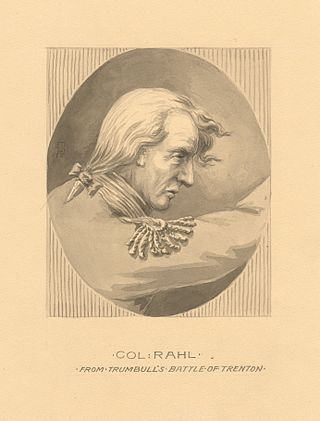
Johann Gottlieb Rall was a German colonel best known for his command of Hessian troops at the Battle of Trenton during the American Revolutionary War.

The Battle of Cassano was fought in 1799 from 27 to 28 April near Cassano d'Adda, which about 28 km (17 mi) ENE of Milan. The clash is part of the battle of the Adda River or the so-called forcing of the Adda, which on the first day of 26 April resulted in a minor victory for the Russians under the Count Suvorov over Barthélemy Schérer's French forces at Lecco. Then, on the second day, Suvorov's Austrians and Cossacks prevailed over Jean Moreau's army, who replaced Schérer as supreme commander, and trapped his isolated division on the third. The action took place during the War of the Second Coalition, as part of the larger conflict known as the French Revolutionary Wars.

The Battle of Ratisbon, also called the Battle of Regensburg, was fought on 23 April 1809, during the Napoleonic Wars, between the army of the French Empire, led by Napoleon I, and that of the Austrian Empire, led by Archduke Charles. Scene of the last engagement of the Bavaria phase of the campaign of 1809, the brief defense of the city and installation of a pontoon bridge to the east enabled the retreating Austrian army to escape into Bohemia. During the assault, Marshal Jean Lannes led his troops up ladders onto the walls, and Napoleon was wounded in his ankle by a small artillery round. The shot had been fired at great distance and did not severely hurt the Emperor, but caused a contusion.

The Battle of Fort Washington was fought in New York on November 16, 1776, during the American Revolutionary War between the United States and Great Britain. It was a British victory that gained the surrender of the remnant of the garrison of Fort Washington near the north end of Manhattan. It was one of the worst Patriot defeats of the war.
The Battle of Connecticut Farms, fought June 7, 1780, was one of the last major battles between British and American forces in the northern colonies during the American Revolutionary War. Hessian General Wilhelm von Knyphausen, in command of the British garrison at New York City, made an attempt to reach the principal Continental Army encampment at Morristown, New Jersey. Knyphausen's advance was strongly met by companies of the New Jersey militia at Connecticut Farms. After stiff resistance, the militia were forced to withdraw, but the battle and skirmishing that preceded it sufficiently delayed Knyphausen's advance that he remained there for the night. After realizing that further advance on Morristown would probably be met by even more resistance, Knyphausen withdrew back toward New York.

The Battle of Tournay or Battle of Tournai or Battle of Pont-à-Chin saw Republican French forces led by Jean-Charles Pichegru attack Coalition forces under Emperor Francis II and Prince Josias of Saxe-Coburg-Saalfeld. After a bitter all-day struggle, Coalition troops recaptured a few key positions including Pont-à-Chin, forcing the French to retreat. The Coalition allies included soldiers from Austria, Great Britain, Hanover, and Hesse-Darmstadt. The Flanders Campaign battle was fought near Tournai in modern Belgium on the Schelde River, located about 80 km (50 mi) southwest of Brussels.

The Battle of Pfaffenhofen was fought on 15 April 1745 between France and Austria. The Austrians under Karl Josef Batthyány defeated the outnumbered French under General Ségur, ending the war in Bavaria.
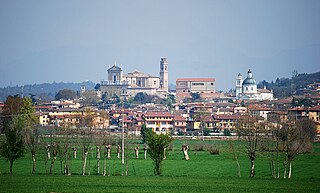
The Battle of Castiglione took place near Castiglione delle Stiviere in Lombardy, Italy on 9 September 1706 during the War of the Spanish Succession. A French army of 12,000 attacked a Hessian corps of 10,000 that was besieging the town and forced them to retreat with heavy losses.
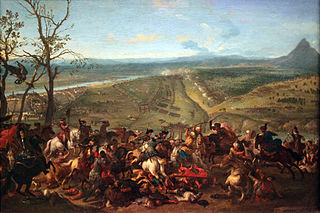
The siege of Belgrade was a successful attempt by Habsburg forces under the command of Prince Eugene of Savoy to capture the strategically important city of Belgrade from the Ottoman Empire. It took place during the Austro-Turkish War (1716–1718), barely a year after the Habsburg victory at the Battle of Petrovaradin (Peterwardein). The Imperial Army routed the Ottoman relief army under Grand Vizier Hacı Halil Pasha on 16 August. As a consequence, the Belgrade garrison, deprived of relief, surrendered to Habsburg forces on 21 August. The Ottoman Sultan Ahmed III sued for peace, resulting in the Treaty of Passarowitz a year later, which completed the transfer of the remainder of Hungary, the Banat of Temeswar with lower Syrmia, and the city of Belgrade with central Serbia into Habsburg hands.

The Battle of Raismes, also known as the Battle of Condé or St. Amand, saw the French Republican army led by Auguste Marie Henri Picot de Dampierre attack the Allied Coalition army of Prince Josias of Saxe-Coburg-Saalfeld. The French intended to raise the Siege of Condé, but were defeated by Coalition forces. The battle was fought during the Flanders Campaign in the War of the First Coalition. After hard fighting, the French were driving back a Prussian force when British reinforcements arrived to stabilize the situation. Dampierre was fatally wounded while leading a final unsuccessful assault. The Allies recaptured the lost ground two days later.

The siege of Ypres saw a Republican French army commanded by Jean-Charles Pichegru invest the fortress of Ypres and its 7,000-man garrison composed of Habsburg Austrians under Paul von Salis and Hessians led by Heinrich von Borcke and Georg von Lengerke. French troops under Joseph Souham fended off three relief attempts by the corps of François Sébastien Charles Joseph de Croix, Count of Clerfayt. Meanwhile, the French besiegers led by Jean Victor Marie Moreau compelled the Coalition defenders to surrender the city. The fighting occurred during the War of the First Coalition, part of the Wars of the French Revolution. In 1794 Ypres was part of the Austrian Netherlands, but today it is a municipality in Belgium, located about 120 kilometres (75 mi) west of Brussels.


















